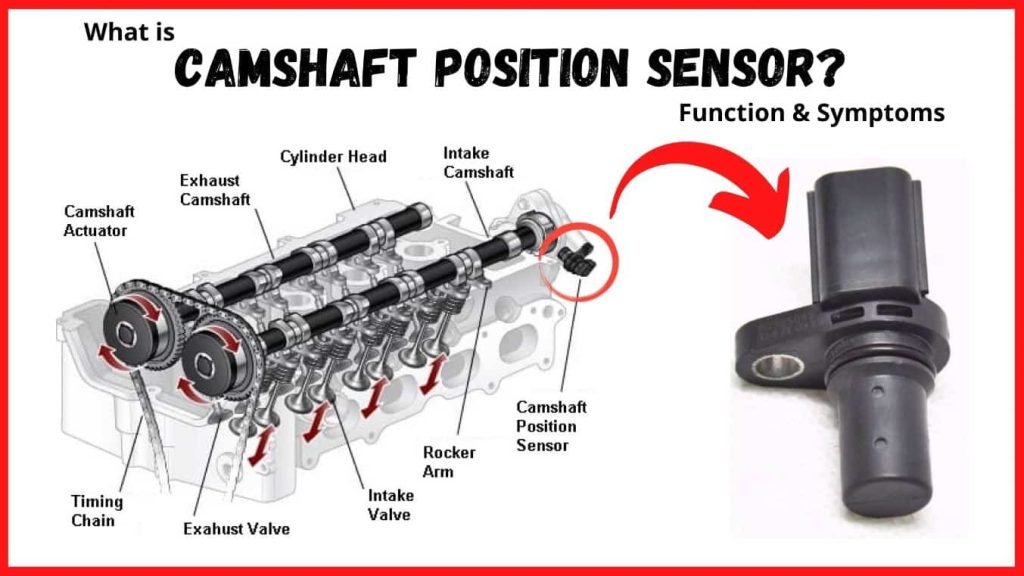A car typically has either one or two camshaft sensors, depending on its make and model. These sensors play a crucial role in monitoring the position and speed of the camshaft, ensuring efficient engine performance. Understanding how many camshaft sensors does a car have is essential for diagnosing and fixing any potential issues related to engine timing and fuel delivery. Let’s delve deeper into the world of camshaft sensors and uncover their significance in the functioning of modern-day vehicles.
How Many Camshaft Sensors Does a Car Have?
Have you ever wondered how a car knows when to inject fuel into the engine or when to adjust the timing of the valves? Well, one crucial component responsible for this is the camshaft sensor. But have you ever asked yourself, “How many camshaft sensors does a car have?” Let’s dive into the world of camshaft sensors and find out!
What is a Camshaft Sensor?
Before we answer the burning question of how many camshaft sensors a car has, let’s first understand what a camshaft sensor actually does. The camshaft sensor is a vital part of a car’s engine management system. It detects the position of the camshaft, which in turn helps the engine control unit (ECU) determine the optimal timing for fuel injection and ignition. In simpler terms, the camshaft sensor is like the eyes and ears of the engine, providing crucial information for efficient engine operation.
Types of Camshaft Sensors
There are mainly two types of camshaft sensors commonly used in cars: the Hall Effect sensor and the optical sensor. The Hall Effect sensor works by detecting changes in magnetic fields, while the optical sensor uses light to detect the position of the camshaft. Both types of sensors serve the same purpose but differ in their technology.
How Many Camshaft Sensors Does a Car Typically Have?
Now, let’s get to the heart of the matter – how many camshaft sensors does a car usually have? In most vehicles, you’ll find either one or two camshaft sensors. The number of sensors can vary depending on the engine configuration and design.
Single Camshaft Sensor Setup
Some cars are equipped with a single camshaft sensor that monitors the position of the camshaft. This sensor provides essential data to the ECU for accurate fuel injection timing and overall engine performance. While a single camshaft sensor setup is common in many vehicles, some high-performance engines may require additional sensors for enhanced precision.
Dual Camshaft Sensor Setup
In certain cars, especially those with more complex engine designs or variable valve timing systems, you may find two camshaft sensors – one for each camshaft. Having dual camshaft sensors allows for more precise control over the engine’s operation, enabling better performance and fuel efficiency. The redundancy provided by dual sensors also enhances reliability and fault tolerance.
Importance of Camshaft Sensors
Now that we know how many camshaft sensors a car can have, let’s explore why these sensors are so vital. Camshaft sensors play a crucial role in ensuring the engine runs smoothly and efficiently. By accurately detecting the camshaft’s position, these sensors help the ECU optimize fuel delivery, ignition timing, and overall performance. Without functioning camshaft sensors, the engine may experience issues like poor fuel economy, rough idling, or even engine misfires.
Signs of Camshaft Sensor Issues
Like any other component in a car, camshaft sensors can develop problems over time. It’s essential to be aware of the signs that indicate a failing camshaft sensor. Some common symptoms of camshaft sensor issues include:
1. Engine Stalling
If the camshaft sensor is malfunctioning, it can lead to erratic engine behavior, such as stalling or sudden shutdowns while driving. This can be dangerous and must be addressed promptly.
2. Check Engine Light
A faulty camshaft sensor can trigger the check engine light on your dashboard. If you notice this warning indicator illuminated, it’s advisable to have your car inspected by a professional mechanic.
3. Poor Performance
A car with a faulty camshaft sensor may experience a decrease in performance, including sluggish acceleration, rough running, or decreased fuel efficiency. Getting the sensor checked and replaced if necessary can restore your vehicle’s optimal performance.
So, to answer the question, “How many camshaft sensors does a car have?” – it typically ranges from one to two sensors, depending on the vehicle’s design and engine complexity. These sensors are essential for ensuring the engine operates efficiently and smoothly by providing critical data to the engine control unit. Keeping your camshaft sensors in good condition is crucial for maintaining your car’s performance and reliability. If you suspect any issues with your camshaft sensors, don’t hesitate to consult a qualified mechanic to diagnose and rectify the problem promptly. Remember, a well-maintained camshaft sensor is the key to a healthy and happy engine!
Stay tuned for more informative articles on car components and maintenance tips!
11 Symptoms of a Bad Camshaft Sensor (How to Test & Fix)
Frequently Asked Questions
How many camshaft sensors are typically found in a car?
Most cars have two camshaft sensors, one for each bank of cylinders in the engine. This setup allows the Engine Control Module (ECM) to monitor the position and speed of the camshafts for better engine performance and fuel efficiency.
Why are camshaft sensors important in a vehicle?
Camshaft sensors play a crucial role in determining the precise timing of the engine’s valves and fuel injection. They help optimize the combustion process, improve fuel efficiency, and ensure the engine runs smoothly.
Do all vehicles have the same number of camshaft sensors?
No, the number of camshaft sensors can vary depending on the engine design. While most vehicles have two camshaft sensors, some newer models or high-performance engines may have additional sensors for more precise control over the engine timing.
Final Thoughts
In conclusion, it is essential to understand how many camshaft sensors a car has to ensure proper functioning of the engine. Most vehicles typically have either one or two camshaft sensors, depending on the engine design. One sensor is common in inline engines, while V-configured engines usually have two. These sensors play a crucial role in monitoring the position of the camshafts, aiding in ignition timing and fuel injection. Understanding the number and placement of camshaft sensors in your car is vital for diagnosing and resolving engine issues efficiently.






+ There are no comments
Add yours